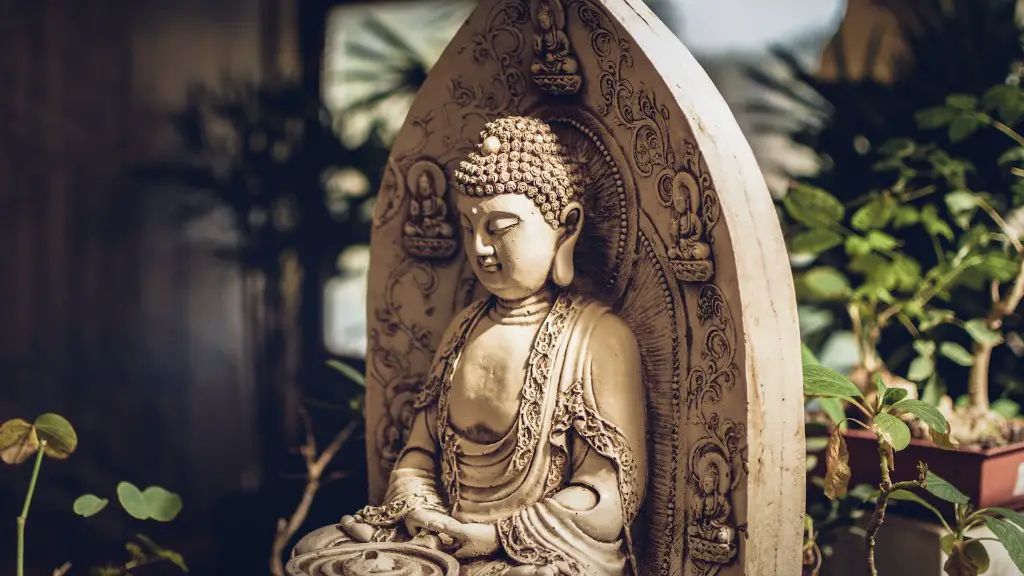Puja is an important part of Hinduism, the world’s third-largest religion. It is the act of worship, a devotional act in honor of the many forms of the deity known as Brahman. In Hinduism, Puja is a ritual offering to the Divine. It is performed in front of a sacred fire and includes offerings of food, items of worship, and mantras to invoke the Divine. Puja is meant to bring inner peace, connection with the Divine, and blessings, both material and spiritual.
Pujas hold special significance, with many being held to celebrate and give thanks for specific milestones. This can include weddings, the start of a business, or even the launch of a new product. Pujas may be held to honor or invite a Divinity or to cure an ailment. Pujas are also conducted regularly in Hindu temples to grant peace, happiness and success. During the annual festival Navaratri, individual families may hold pujas in their homes to honor the 9 forms of goddess Durga. This is often a special event for the family, with different puja ceremonies for each day of the festival.
The primary part of most puja ceremonies is to offer specific items to the deity and to express devotion and reverence. These items can vary from flowers, incense, and food offerings to books of mantras and devotional songs. During the puja, the deity is thanked for his or her blessings. Prayers are offered for peace and wellbeing. Often, these offerings are made on a specific altar, which may contain a statue or image of the deity, a holy symbol such as a lingam, or a yantra.
The physical objects used in a puja are not the true focus. Rather, it is the intention and energy behind the offering that matters. Through focusing their attention, energy, and devotion to the Presence of the Divinity, puja allows us to open ourselves to Beingness and align ourselves with the highest vibration of Love, Peace, and Oneness. There is evidence that puja meditation activates brainwaves that can lead to relaxation and nurtures compassion, love, and inner stillness.
Symbolic Acts
In Hinduism, many of the acts performed during the puja have symbolic meaning. For example, lighting a candle signifies the power of knowledge and the light of consciousness; ringing a bell symbolizes the calling out of the Divine; and applying sacred ash, called vibhuti, represents the power of the Divine to transcend material existence. Pujas may include offerings of the five main substances called Panchamrut, which represent the five elements: water, fire, earth, air, and ether (space). Each element symbolizes one of the five chakras or energies of the body and reminds us of the interconnection between them.
Pujas may also include gestures of respect such as a sincha, where water is poured into the palm of the hand and then thrown over the shoulder as a symbol of washing away sins. In more solemn pujas, an offering of a lamp may be made by taking nine steps around an altar and then lighting the lamp. The priest or yogi performing the puja will often recite sacred texts and mantras during the ceremony.
Traditional Puja Procedures
The traditional procedure for a puja consists of 16 steps, each one having its own purpose and intention. The 16 steps are known as Shodasha Upachara and they are as follows:
- Offering of water (Achman): Purification of the ritual space and the consciousness of the participants.
- Inviting (Avahana): Speaking aloud the invitation of the Deity and indicating the intention.
- Worship with flowers (Akshata): Offering flowers as an expression of love, devotion and respect.
- Incense (Dhupa): An offering of incense for perfume and for purification.
- Oil Lamps (Deepa): Offering light as a symbol of spiritual enlightenment and awareness.
- Food offerings (Naivedya): Offering food as nourishment for the body and soul.
- Drinking water (Vastraropana): Offering water as refreshment and reviving the spirit.
- Dressing and adorning (Vastra Samarpana): A symbolic offering to honor the Divine.
- Auspicious things (Swarna Prashana): A symbolic offering of jewels to bring abundance and prosperity to the one who offers.
- Garlands (Aposhna): Offering garlands as a symbol of inner beauty and joy.
- Sprinkling holy water (Snana): Purification of the mind and body.
- Realization (Abhisheka): A formal offering of prayers.
- Worship with betel leaves and nut (Arati): Offering the music of chanting with a gesture of blessing for the recipient.
- Sacrifice (Homa): A symbolic offering of sacrifice for strength, courage and success.
- Taste of prasad (Prasadam): Sharing the Divine Grace by receiving and tasting the food offering.
- Farewell (Utsava): Invoking the blessings of the Divine and conveying gratitude.
Health Benefits Of Puja
The power of Puja has been shown to bring about spiritual and mental healing, even to those untrained in the Hindu faith. Through the combination of chanting, prayer and offering, it has a physiological and psychological effect on believers, helping them to reach a calmer and more relaxed state. Studies have shown that regular meditation and puja lead to a state of physical and emotional wellbeing, as well as improved mindfulness, concentration, and improved sleep.
In terms of physical health, puja has been proven to help alleviate stress, reduce anxiety, protect the immune system, and improve blood pressure, heart rate, and respiratory rate. Puja also improves the flow of energy in the body, restoring balance and harmony. A puja also helps to connect practitioners to the inner divinity, allowing them to connect to their higher self and find joy and bliss even in the most trying of times.
The Power Of Mantra
Mantras are a key part of puja. The term ‘mantra’ comes from two Sanskrit words: ‘man’ meaning ‘mind’ and ‘tra’ meaning ‘protection’. Thus, in Hinduism a mantra is a powerful word or phrase that is believed to protect the mind. The repetition of mantras can be used to bring focus to our meditation and tap into an energy source greater than ourselves. By chanting mantras, we are able to enter a deep meditative state, which can bring us relief from stress and tension, an increase in intuition and clarity, and a sense of connection with the Divine.
Mantras are often associated with specific Hindu gods and goddesses and can be used to invoke a specific energy, vibration, or intelligence. For example, the mantra ‘Om Namah Shivaya’ is associated with the god Shiva and is thought to bring wisdom, peace, and protection. Other mantras can be used to focus energy, to bring healing, or to invoke abundance and prosperity.
In ritual worship, mantras are often recited with devotion and understanding. This allows us to tap into the power of the mantra and to direct our energy, thoughts, and prayers in a specific way. By doing this, we can create a strong energetic link to the divine, enabling us to open our hearts and minds to its healing and transformative power.
Significance of Puja in Hinduism
In Hinduism, Puja is regarded as an essential part of spiritual practice. Although the physical act of making offerings is important, it is believed that it is the positive intention behind the offering that matters. Throughout its history, Puja has been used to create a connection between individuals and the Divine, to bring healing and blessings, and to give thanks for successes and milestones.
Puja is not just about performing rituals. It is also about taking part in an ancient tradition and connecting to the heart of Hinduism. Whether one takes part in puja in a temple, at home, or at a festival, it provides an opportunity to experience joy, peace, and transformation, and to renew our connection with the Divine.


